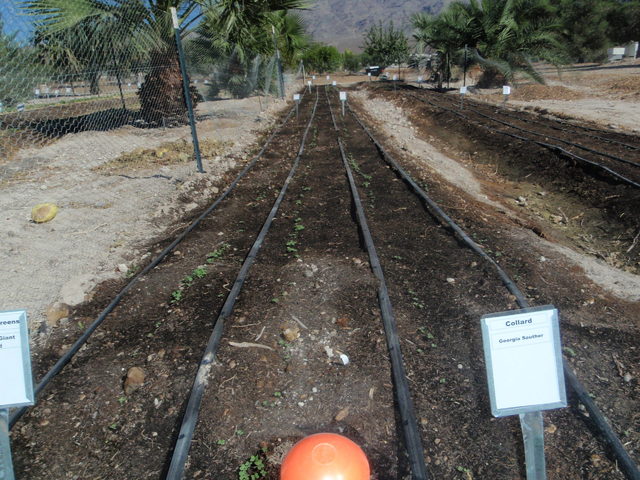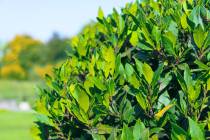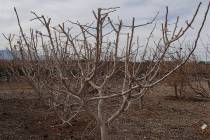Composting creates ‘black gold’ that is valuable addition to gardens
Q: Recently you recommended applying compost to lawns. I am confused if you mean steer manure. How often do you recommend doing this? When should I do my first application? My lawn is approximately 1,000 square feet. How much compost should I buy?
A: Compost is very different from steer manure. Steer manure in a bag is dried poop from cows broken apart mechanically so it’s easy to use. Compost can be made from the manure of animals such as steer, horse, rabbit or chicken, even human, or entirely from plants. But it takes time to make it.
Composting breaks down manure much faster when compared to Mother Nature doing it au naturel. Both Mother Nature and composting create a very rich ingredient, the gardener’s “black gold,” which is a valuable addition to vegetable gardens, fruit trees, ornamental trees, shrubs and even lawns.
Steer manure bought in a bag is raw and not composted. When manure is not composted, it has not yet released its “black gold” that is so valuable. In its raw state, steer and other animal manures may cause damage to plants if applied incorrectly.
Bagged steer manure is cheap and tempting to use. But use it with caution.
Research done at Cornell University clearly demonstrates the best compost to use on lawns is made from an urban waste, called municipal solid waste in engineering and science lingo. If composted correctly, compost made from municipal solid waste is a very valuable resource.
We have a big environmental problem with solid and liquid waste coming from cities. In Nevada, this urban waste is buried in landfills.
In other states, putting it in landfills is no longer permitted. In these states, municipal solid waste is required by state law to be put to beneficial use; much of it is made into compost.
University research regarding lawn diseases and compost from municipal solid waste is very clear. This type of compost not only fertilizes the lawn but helps it fight several diseases, including several that damage tall fescue in our climate.
Apply this type of compost evenly over the lawn, about 1/8 inch deep, equivalent to 11 cubic foot bags applied to 1,000 square feet of lawn. Use a compost spreader to apply it.
Apply it monthly during the growing season. In our climate, I would start applying it in February until May. I would avoid applying it during the hottest months of June, July and August. Resume applying it in September, October, November and December.
Q: We have several different palo verde trees. Last winter, one had brown leaves and looked like it was dying. Come spring, it grew new green leaves and looked fine during the summer. This winter, again, several of them have brown, dead-looking leaves. What is going on?
A: Sometimes palo verde are called evergreen when, in fact, they may not be in our climate. Evergreen in a warm climate may not be evergreen in a colder climate. Whether they keep their leaves green through the winter is a matter of climate, weather conditions, the type of tree and how the tree is managed.
Just because they are collectively called palo verde does not mean the trees respond to winter cold temperatures the same. Some types of palo verde may be evergreen during warm winters but have brown leaves or drop them during cold winters. Some types of palo verde trees maintain their leaves through the winter better than others. Therefore, you’re seeing differences among the several types you have.
If winter temperatures are warm, the leaves remain green or evergreen. During colder winters, leaves fade to a yellowish green after a moderate cold snap. If winter temperatures get colder, leaves die and turn brown. They may or may not drop. Don’t worry. New leaves emerge in the spring and replace the dead ones, just as yours did.
At temperatures even colder than this, leaves, as well as small branches, might die. Temperatures still colder? Leaves and small branches die, and larger limbs might die as well. Temperatures even colder than this? The tree might die. How much of the tree dies depends on how cold it gets and for how long this cold temperature sticks around.
Help trees that are winter tender by never fertilizing with nitrogen fertilizers after July 1. Applications of phosphorus or potassium are fine, but no nitrogen.
Q: I will be planting three fruiting mulberries on the edge of my lawn. I remember reading that roots of these trees seek water and may become invasive or destructive. Will planting mulberries cause any issues if they are planted next to my lawn? I plan to keep these mulberries short for picking the fruit.
A: Just to clarify for our readers, mulberry trees that produce fruit can be planted in our county. They are legal. But the so-called “fruitless mulberries” are not permitted.
Mulberries are either male or female trees. Buying a tree that produces fruit means it is a female mulberry tree. The male trees (fruitless) are not permitted for planting because of pollen and allergy problems.
Mulberries characteristically have shallow roots, and these roots may cause problems as the tree gets older. As these roots get older and larger in diameter, they may appear on the soil surface and cause “bumpy” lawns. In my experience, mulberry roots are more of a problem in desert landscapes than when planted near, or in, lawns.
Never plant mulberries or any type of tree or woody shrub near a septic tank. These roots enter sewer lines that are broken or any possible point of entry. Mulberry roots generally do not get much deeper than 12 to 18 inches. Sewer lines deeper than this should pose very few problems.
Mulberry roots, because they grow close to the surface of the soil, can lift sidewalks and patios if planted too close to them. Keep these trees planted at least 10 feet away from sidewalks and walls. Attached patios and foundations are usually not a problem if water is applied no closer than 3 feet away.
Fruiting mulberries will have fruit close to the ground picked by humans, while fruit higher in the tree is left for birds. Mulberries producing red, purple or black fruit can be a huge problem for neighbors if left for the birds.
Bird droppings from this type of fruit stain automobiles and patios, drop in pools and create a huge mess for your neighbors. It can be done, but mulberries are huge trees and difficult to keep small and picked perfectly clean of fruit. Plant white fruited mulberries.
Q: What’s wrong with my tree? The tree is dying from the inside to the outside. I can see dead wood on the inside that is rotting through a big hole in the side of the tree.
A: Older trees are dead on the inside and have a cylinder of living tissue just under the bark. If the dead wood inside of the tree becomes infected with wood-rotting microorganisms, they can consume the entire inside of the tree, eventually leaving it hollow but alive.
The center of the tree can get infected with these microorganisms when large branches break or they are removed with an unsanitary chainsaw. It is important to remove broken branches as soon as possible with a sanitized chainsaw or handsaw. The remaining wound is left to heal on its own without any sealer being applied.
The dead wood inside the tree has little chance of fighting off wood-rotting microorganisms. Once infected, these microorganisms spread easily through the dead, internal parts of the tree.
These microorganisms do not invade or damage healthy, living parts of the tree. Keep trees healthy with appropriate irrigations. Fertilize them once a year in early spring. Sanitize and sharpen any tools that cut into any healthy parts of the tree.
Bob Morris is a horticulture expert living in Las Vegas and professor emeritus for the University of Nevada. Visit his blog at xtremehorticulture.blogspot.com. Send questions to Extremehort@aol.com.



























